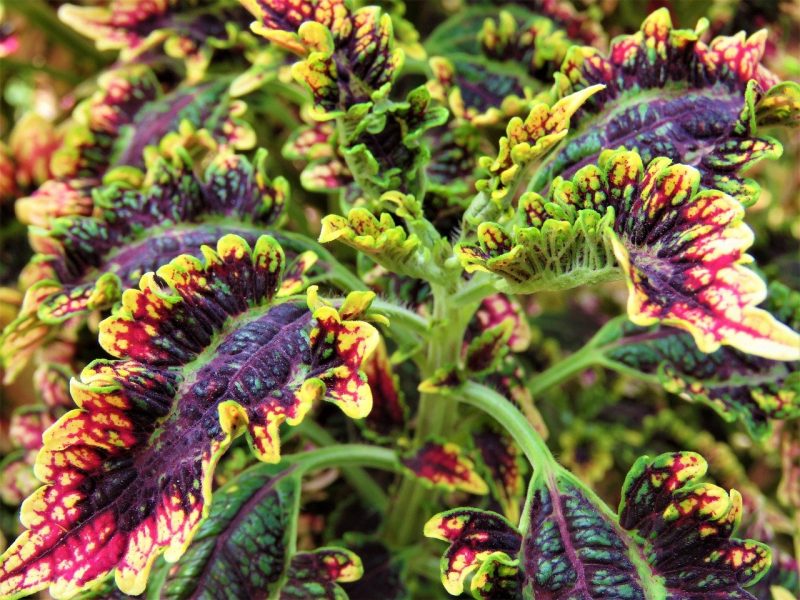Knowing how to overwinter coleus is extremely important if you want to admire its beauty it all-year-round. As you very well know, coleus is known for its show-stopping colors.
With a wide range of hues for its foliage, this tropical plant is ideal for bringing life to your garden. However, when the temperature goes below 50 degrees F, its colors become dull and eventually withers.

Unless your coleus is prepared to bring on the cold weather or frost, they would, for sure, not last long. Knowing how to overwinter coleus is essential because once they survive the chill, you can be confident to enjoy its magnificence for an extended time.
How To Make Sure Your Coleus Survives Winter
Like how easy it is to plant and propagate coleus, overwintering it is just as simple. You only need to make sure that you can maintain the ideal temperature for it. This means that you would have to move the plant to an area where you can control the warmth.
The best place to control the temperature is indoors. For this reason, prior to the first frost, move your containers with coleus inside. But before doing this, make sure that there are no bugs and that the leaves are dust-free.
You would have to start digging up the plants in fall, or else it would be too late when the weather gets too cold. Get the entire root system, and although not necessary, trimming the top half can help when it comes to reducing shock.
Use well-draining soil and place them in pots appropriate for their size. Before completely transporting them inside, let them adjust to the change in the environment for about a week first.
There must be enough light in your chosen area as this is vital for every plant’s growth. That can either come from a sunny window or under an artificial lamp. Make sure to hydrate them just enough for their needs and to check for pests and diseases.
Remember To Take Cuttings Before Transplanting
Aside from keeping your coleus safe from the harsh weather, cuttings can be used to increase your stock of cultivars. Likewise, start taking them in late fall for more chances of survival.
Cut about three to four inches of the tip of your healthy coleus plants. Then, remove the leaves at the bottom and insert about 12 of the ones you have cut into a 6-inch pot. Depending on the container’s size, the ratio can be adjusted.
Choose peat moss, potting soil, and even sand, which are recommended for coleus cuttings. You can also dip the plant’s ends in rooting hormone, although they can still survive even without such.
You can then move them indoors under the ideal conditions. After a week or so, roots will already form, and you can start moving them in individual pots. Start transplanting them in larger containers after around six weeks.
Top Reasons Why Greenhouse Gardening Is Beneficial For You And Your Plants
Did you know that you’d be doing yourself and your plants a big favor if you decide to give greenhouse gardening a try? Although acquiring a mini greenhouse or a hobby greenhouse may require you to invest in high-quality materials, you’ll get the best bang for your buck. The rewards are worth every penny you’ll spend.
To prove this point, check out the best reasons why greenhouse gardening makes a lot of sense.
You can control the growing environment of your plants
What could be better than being able to control the conditions of your plants’ growing environment? Since a greenhouse is an enclosed structure, you’ll be able to manipulate the temperature, ventilation, and humidity that would suit the needs of your precious plants.
You’ll have many plant options
Since you’ll have free rein over your plants’ growing environment, you’ll have countless opportunities to grow plants that aren’t native to your area. If you’ve always wanted to grow exotic tropical plants since time immemorial, this is your chance!
You’ll keep your plants protected from bad weather
Your greenhouse can provide your plants with a layer of protection that shields them from the elements. In other words, there’s no need for you to make emergency preparations in the event of a thunderstorm or a blizzard.
It keeps the pests and critters away
Destructive insects and animals are every gardener’s bane. While this is true for traditional outdoor gardening enthusiasts, this isn’t so for those who are into greenhouse gardening. Plants that are grown in an enclosed structure have extra protection from the constant threat of pests and critters.
You can grow your own food
There’s nothing better than being able to grow your own food. Aside from saving money on groceries, you can also be sure that you and your family are reaping a harvest of fruits, vegetables, and herbs that are weren’t exposed to harmful chemicals and pesticides.
Final Thoughts on How to Overwinter Coleus
Be aware that it is natural for coleus to lose their usual burst of colors during winter. Some of the leaves might even wither and fall.
So, it is just dormant, not dead, as long as you know how to overwinter coleus. Then, new leaves will eventually sprout by the time spring comes. Perhaps by then, you might even decide to grow them in your very own greenhouse.
